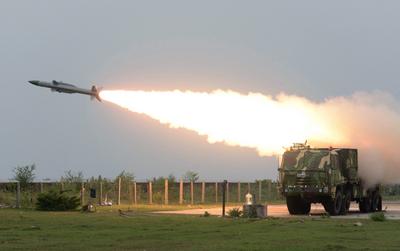This will help India in leveraging critical technologies to develop domestic capabilities in the Indian defence industry and thereby create jobs in the country. This might be a game changer in defence production in India, which has historically been dominated by the public sector and is in need of investment and modernisation.
India is aiming to strengthen its global strategic presence and is eyeing a seat on the UN Security Council. External and internal security concerns further demand increasing defence expenditure to modernise India’s defence industry. However, given the fiscal constraints that the country is facing, this requires an increase in capital expenditure. India currently imports 70 per cent of its defence equipment. If India is to reach its target of meeting 70 per cent of its defence needs domestically, it needs top-end technologies and a vibrant manufacturing base. This is possible with increased FDI.
Between 2001 and 2011 India’s defence expenditure increased 64 per cent in real terms, but not in line with defence requirements. In the 2014–15 interim budget, the Indian government allocated US$37.15 billion for defence with 60 per cent (roughly $22.75 billion) revenue and 40 per cent capital component. Though 2014–15 budgeted a 9.98 per cent increase over the preceding year, the defence budget as a share of GDP went down marginally to 1.7 from 1.8 per cent in 2013–14. This signals that defence expenditure, while having grown in absolute numbers, has not grown as fast as the overall economy.
Realising the sector’s needs, the Indian government allowed private participation and FDI up to 26 per cent in 2001. This has attracted foreign original equipment manufacturers (OEMs) to India, but there is still only a small amount of foreign capital and technology flowing into the country.
Indian defence is still dominated by the public sector. Most contracts are given to Defence Public Sector Units, even if a private company is better placed in terms of infrastructure and knowledge to utilise the technology. Procedural issues also constrain private sector participation. For instance, the private sector is not made aware of the needs of the armed forces in advance. Also, the public sector is seen as best representing national pride.
It is hoped that raising the FDI cap will lead to joint ventures between the Indian private sector and OEMs that generate technology consistent with international standards. The Indian government should ensure OEMs receive the necessary approval from their host countries to share technology with Indian partners. The Indian government should also prioritise joint ventures where more than 50 per cent of the products can be manufactured in the country to develop the Indian defence manufacturing base. This will help Indian partners develop the necessary infrastructure and get required certifications. OEMs should further be encouraged to share technology that is consistent with India’s defence objectives as outlined in the 15 year ‘Indian Armed Forces Long-Term Integrated Perspective Plan’.
Also, the Indian government’s enforcement of an export commitment for joint ventures could help the Indian defence industry integrate into the global market and ensure international standards in manufacturing.
Joint ventures’ employment of Indian nationals at operational and supervisory levels would also be an important part of this integration process.
Allowing increased FDI in defence equipment manufacturing is a positive step for India. It will provide the Indian private sector with a level playing field from which to compete with the best from both the public sector and OEMs. In the long run, increasing FDI will help achieve India’s objective of a self-reliant defence industry that is less dependent on imports.
Pravakar Sahoo is an Associate Professor at the Institute of Economic Growth, Delhi University.


This is perfect for India to get in tune with the modern world defence technology.